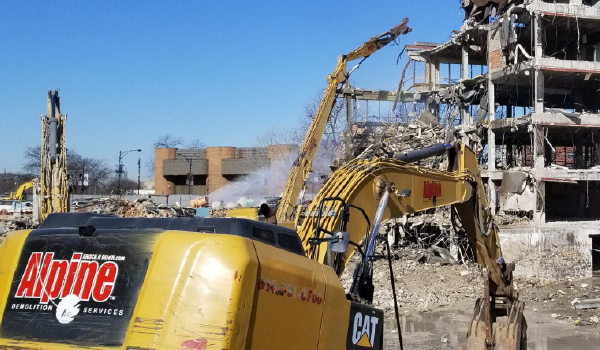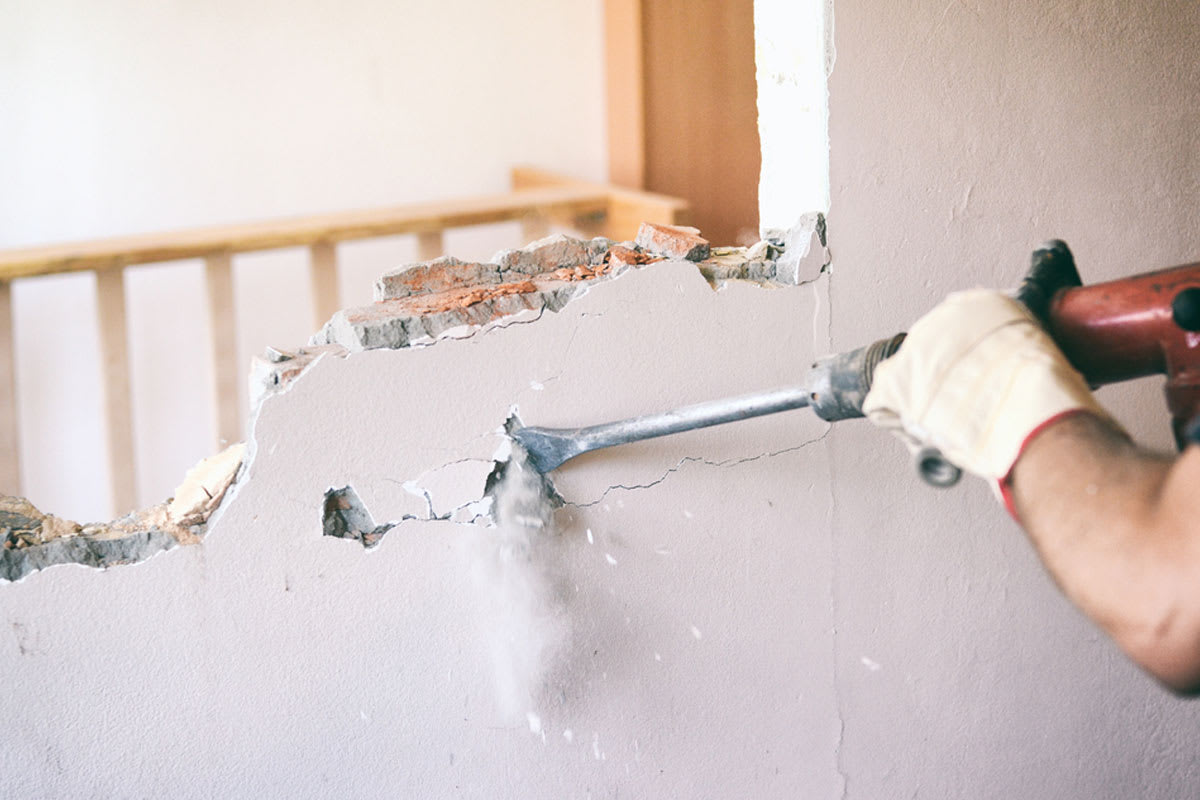The Ultimate Overview to Inside Demolition Techniques and Devices
Within the world of indoor improvements, the art of demolition is a crucial phase that calls for precision, skill, and the right set of devices. Whether you are an experienced professional or a do it yourself enthusiast, comprehending the ins and outs of indoor demolition techniques can make all the distinction in accomplishing an effective job outcome. As we browse with the nuances of this thorough overview, we will reveal essential devices, safety and security steps, and specialist methods that are important when beginning on the journey of changing a space. Keep tuned to discover the crucial understandings that can boost your demolition expertise to brand-new heights.
Important Indoor Demolition Devices
When embarking on indoor demolition jobs, having the proper devices is vital for effectiveness and safety. One of one of the most essential tools for indoor demolition is the demolition hammer. This sturdy device is developed to appear challenging materials like concrete, tile, and drywall. Its effective hammering action can promptly demolish wall surfaces, floors, and various other frameworks. Furthermore, a pry bar is essential for removing fixtures, trim, and various other materials. Its utilize enables the very easy extraction of nails and various other bolts without damaging the surrounding surface areas - interior demolition.
Its ability to make precise cuts in limited areas makes it optimal for demolition work. In general, having these important interior demolition devices will substantially improve the effectiveness and safety and security of any kind of demolition job.

Security Safety Measures During Demolition

Additionally, all employees included in the demolition procedure need to receive ample training on the proper handling of devices and devices to lessen accidents. By adhering to these safety and security precautions, indoor demolition tasks can be brought out successfully while prioritizing the health of all individuals entailed.
Techniques for Getting Rid Of Walls
Applying appropriate safety and security precautions throughout indoor demolition jobs is crucial for producing a safe and secure working atmosphere, and one key element of such tasks involves understanding methods for removing walls. One frequently utilized approach is manual demolition, which needs the usage of basic hand tools such as sledgehammers, crowbars, and energy blades to thoroughly dismantle the wall surface piece by piece. This method permits greater control over the demolition process, particularly in fragile areas where accuracy is necessary.
For bigger, more complicated wall surfaces, mechanical demolition might be necessary. This involves making use of hefty machinery like bulldozers or excavators to knock down wall surfaces effectively. It is critical to ensure that the structural stability of the building is not jeopardized during mechanical demolition.
One more method for eliminating walls is deconstruction, where the wall is taken apart in a manner that preserves reusable materials. This sustainable approach is environmentally friendly and can also help in reducing disposal prices. Whichever strategy is used, it is vital to adhere to correct safety and security procedures and think about the structural implications of wall removal to ensure an effective indoor demolition job.
Removing Flooring Like a Pro
Efficiently getting rid of floor covering throughout indoor demolition needs the appropriate tools and strategies to make sure a smooth and successful procedure. The initial step in removing floor covering is to remove the area of any kind of furnishings or obstacles. Next off, determine the sort of floor covering to figure out the suitable removal approach. For hardwood or laminate floor covering, begin by removing the baseboards and after that make use of a floor covering scraper to raise and detach the slabs. Carpet elimination involves reducing the rug into workable sections and rolling it up for disposal. For ceramic tile or vinyl floor covering, a chisel or floor scrape can be utilized to tear up the sheets or floor tiles. It's important to put on protective gear such as handwear covers, goggles, and a mask to avoid injuries and direct exposure to dust and particles. Additionally, having a dumpster or designated disposal area prepared for the removed floor covering materials is crucial for preserving a tidy workplace. By adhering to these methods and making use of the right tools, eliminating floor covering like a pro can be achieved effectively and effectively.
Appropriate Garbage Disposal Approaches
After successfully getting rid of floor covering making use of the proper devices and strategies, the next essential step in the interior demolition procedure is applying correct garbage disposal techniques. Appropriate waste disposal is important for keeping a safe and clean job atmosphere during and after demolition. One of the primary methods for waste disposal is setting apart materials into various categories such as recyclable, hazardous, and basic waste. This segregation makes certain that products are taken care of appropriately and properly.

Contractors must adhere to local policies relating to garbage disposal to stay clear of fines and penalties. Making use of specialist continue reading this waste monitoring solutions can simplify the disposal procedure and make certain conformity with ecological standards. By applying correct garbage disposal techniques, interior demolition jobs can be completed efficiently and sustainably.
Conclusion
In verdict, indoor demolition calls for the usage of essential devices and strict security precautions to ensure a risk-free and successful procedure. Strategies for eliminating walls and flooring must be done meticulously and efficiently to avoid any kind of damage or accidents. Correct waste disposal approaches are likewise important to preserve a tidy and orderly job area. By adhering to these standards, interior demolition can be finished successfully and with very little threats.
One of the most crucial devices for indoor demolition is the demolition hammer (interior demolition). In general, having these essential interior demolition devices will significantly improve the efficiency and safety and security of any demolition job
Efficiently eliminating floor covering during interior demolition needs the correct tools and methods to make certain a effective and smooth procedure.After efficiently eliminating floor covering using the appropriate devices and techniques, the following vital step view it now in the interior demolition procedure is applying proper waste disposal techniques.In verdict, indoor demolition requires the use of necessary devices and strict safety precautions to make sure a effective and risk-free process.
Comments on “Browsing Security Regulations in Interior Demolition: A Comprehensive Guide”